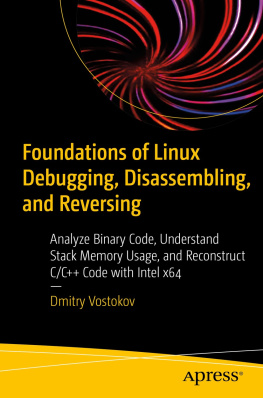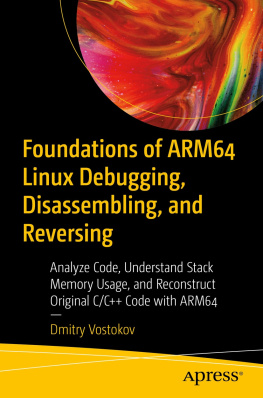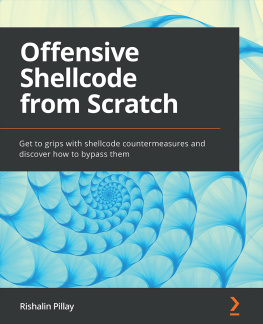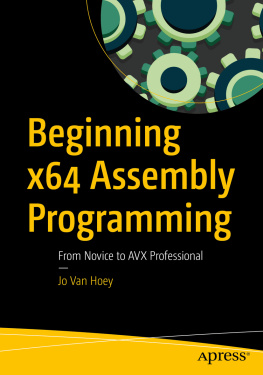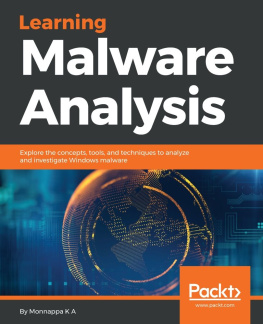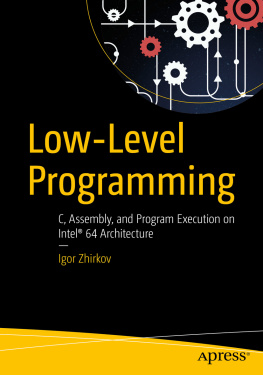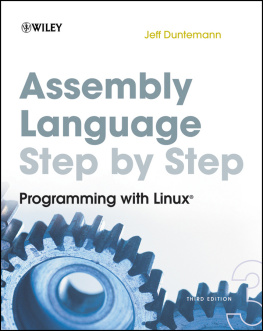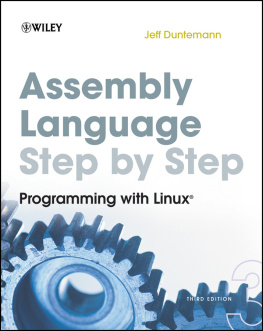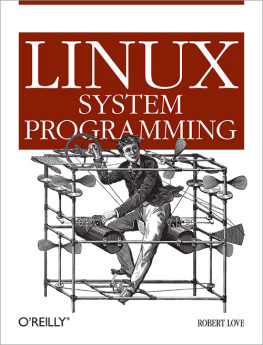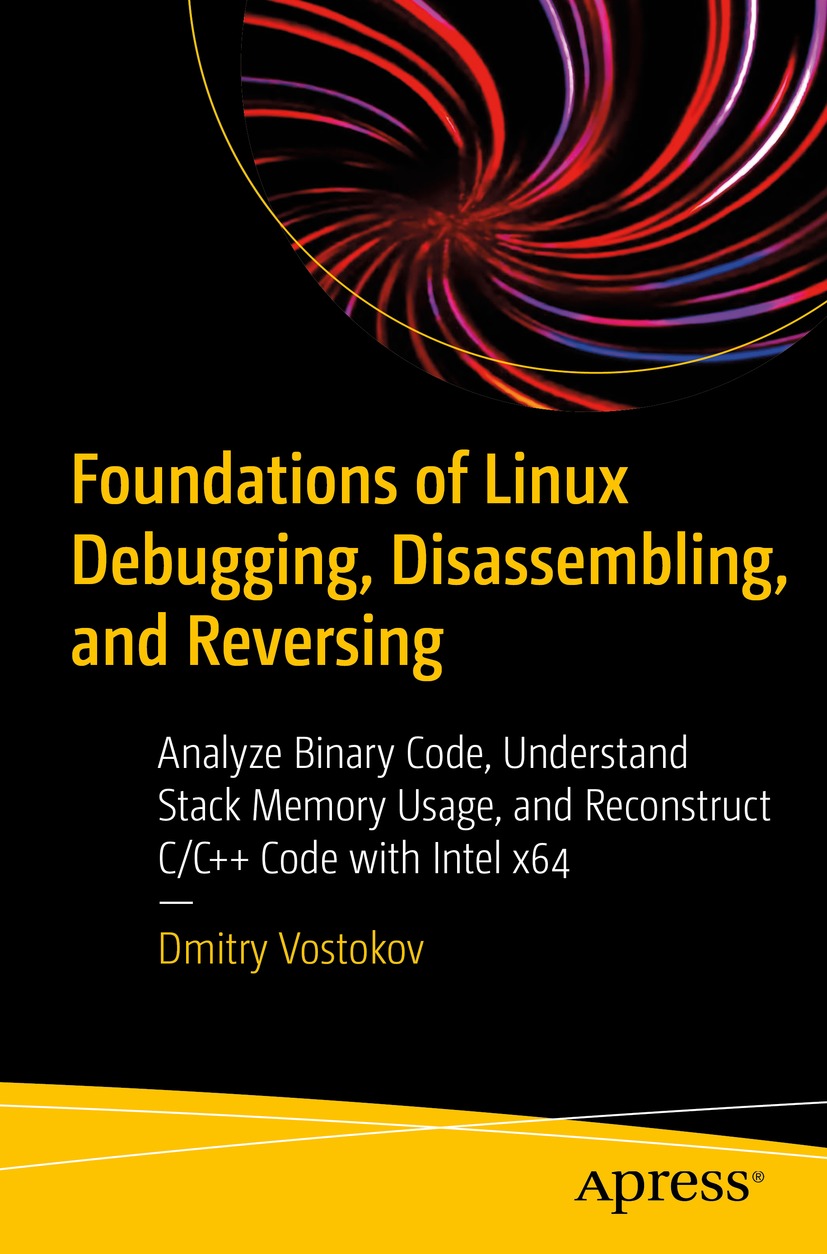Dmitry Vostokov - Foundations of Linux Debugging, Disassembling, and Reversing: Analyze Binary Code, Understand Stack Memory Usage, and Reconstruct C/C++ Code with Intel x64
Here you can read online Dmitry Vostokov - Foundations of Linux Debugging, Disassembling, and Reversing: Analyze Binary Code, Understand Stack Memory Usage, and Reconstruct C/C++ Code with Intel x64 full text of the book (entire story) in english for free. Download pdf and epub, get meaning, cover and reviews about this ebook. City: Berkeley, CA, year: 2023, publisher: Apress, genre: Computer. Description of the work, (preface) as well as reviews are available. Best literature library LitArk.com created for fans of good reading and offers a wide selection of genres:
Romance novel
Science fiction
Adventure
Detective
Science
History
Home and family
Prose
Art
Politics
Computer
Non-fiction
Religion
Business
Children
Humor
Choose a favorite category and find really read worthwhile books. Enjoy immersion in the world of imagination, feel the emotions of the characters or learn something new for yourself, make an fascinating discovery.
- Book:Foundations of Linux Debugging, Disassembling, and Reversing: Analyze Binary Code, Understand Stack Memory Usage, and Reconstruct C/C++ Code with Intel x64
- Author:
- Publisher:Apress
- Genre:
- Year:2023
- City:Berkeley, CA
- Rating:5 / 5
- Favourites:Add to favourites
- Your mark:
Foundations of Linux Debugging, Disassembling, and Reversing: Analyze Binary Code, Understand Stack Memory Usage, and Reconstruct C/C++ Code with Intel x64: summary, description and annotation
We offer to read an annotation, description, summary or preface (depends on what the author of the book "Foundations of Linux Debugging, Disassembling, and Reversing: Analyze Binary Code, Understand Stack Memory Usage, and Reconstruct C/C++ Code with Intel x64" wrote himself). If you haven't found the necessary information about the book — write in the comments, we will try to find it.
Review topics ranging from Intel x64 assembly language instructions and writing programs in assembly language, to pointers, live debugging, and static binary analysis of compiled C and C++ code. This book is ideal for Linux desktop and cloud developers.
Using the latest version of Debian, youll focus on the foundations of the diagnostics of core memory dumps, live and postmortem debugging of Linux applications, services, and systems, memory forensics, malware, and vulnerability analysis. This requires an understanding of x64 Intel assembly language and how C and C++ compilers generate code, including memory layout and pointers.
This book provides the background knowledge and practical foundations youll need in order to master internal Linux program structure and behavior. It consists of practical step-by-step exercises of increasing complexity with explanations and ample diagrams. Youll also work with the GDB debugger and use it for disassembly and reversing.
By the end of the book, you will have a solid understanding of how Linux C and C++ compilers generate binary code. In addition, you will be able to analyze such code confidently, understand stack memory usage, and reconstruct original C/C++ code. Foundations of Linux Debugging, Disassembling, and Reversing is the perfect companion to Foundations of ARM64 Linux Debugging, Disassembling, and Reversing for readers interested in the cloud or cybersecurity.
What Youll Learn
- Review the basics of x64 assembly language
- Examine the essential GDB debugger commands for debugging and binary analysis
- Study C and C++ compiler code generation with and without compiler optimizations
- Look at binary code disassembly and reversing patterns
- See how pointers in C and C++ are implemented and used
Software support and escalation engineers, cloud security engineers, site reliability engineers, DevSecOps, platform engineers, software testers, Linux C/C++ software engineers and security researchers without Intel x64 assembly language background, beginners learning Linux software reverse engineering techniques, and engineers coming from non-Linux environments.
Dmitry Vostokov: author's other books
Who wrote Foundations of Linux Debugging, Disassembling, and Reversing: Analyze Binary Code, Understand Stack Memory Usage, and Reconstruct C/C++ Code with Intel x64? Find out the surname, the name of the author of the book and a list of all author's works by series.

